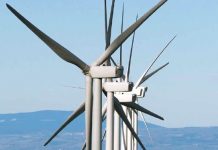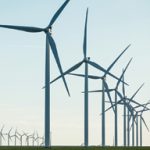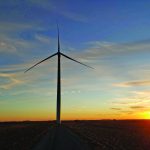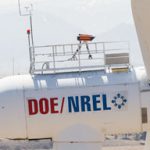Only one commercial offshore wind farm currently exists in the United States — the Block Island Wind Farm in Block Island, Rhode Island. But market predictions show rapid growth for this industry over the next 10 years in states such as New York, Massachusetts, Maine, and Oregon. As the offshore wind industry grows and evolves, engineers and designers need tools that can help develop better-performing, more cost-competitive wind turbines.
Reference wind turbines (RWTs) — open-access designs of a complete wind-turbine system, with supporting models for simulation and design — make it possible to evaluate the performance and cost of proposed modifications before prototype development. NREL recently released the International Energy Agency Wind Technology Collaboration Programme 15-MW reference turbine, or IEA Wind 15-MW for short, which features options for both fixed-bottom turbines and those with floating substructures. This open-source model, now available on GitHub, can accommodate multiple software tools and will provide industry, researchers, and academics a public-domain tool for designing next-generation offshore wind turbines.
NREL’s wind-energy communications team sat down with NREL Postdoctoral Researcher Evan Gaertner, who led the design effort, to learn more.
Why is the tool named for the International Energy Agency Wind Technology Collaboration Programme?
While NREL led the development of the IEA Wind 15-MW, it was a collaborative effort with many researchers from around the globe. The International Energy Agency Wind Technology Collaboration Programme helped to coordinate that collaboration through one of its research tasks.

Who was involved?
NREL worked in collaboration with the Technical University of Denmark [DTU] and the University of Maine. NREL designed the rotor, generator, drivetrain, nacelle, tower, monopile, and controller. DTU was invaluable for reviewing the design and suggesting improvements, performing loads analysis and developing public domain models for their simulation toolsets, and U of Maine designed the semisubmersible loading substructure. Several companies provided feedback on the design of individual subsystems.
What’s the most exciting thing about this reference turbine?
Offshore wind turbines have eclipsed the current slate of reference turbines in terms of size and utility. The IEA Wind 15-MW’s configurations go beyond the capabilities of the 10- to 12-MW turbines already in development by industry, but are similar enough to serve as a baseline for 15- to 20-MW next-generation designs, which means the IEA Wind 15-MW will serve as a valuable development resource for the foreseeable future.
How might this reference turbine impact the future for the wind industry?
The IEA Wind 15-MW will help support cutting-edge research for years to come. Several projects and project proposals are starting to use the reference turbine, even in its prerelease state. For instance, it’s already being used to study lightweight generators and floating support structure design and to conduct wind turbine software tool comparisons.
Wind energy researchers, designers, and academics can learn more by reading the technical report and by using the tool themselves on GitHub.
The IEA Wind 15-MW was partially funded by the Department of Energy’s Office of Energy Efficiency and Renewable Energy’s Wind Energy Technologies Office.
MORE INFO www.nrel.gov








































